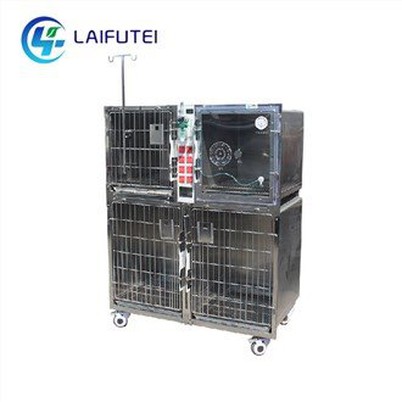Maintenance methods for pet oxygen chambers
Leave a message
Inspection of oxygen supply equipment
For pet oxygen chambers that use oxygen concentrators to provide oxygen, the operating status of the oxygen concentrator should be checked daily. Observe the indicator lights on the machine, such as whether the power indicator light is on normally and whether the operating indicator light flashes or remains stable. This can preliminarily determine whether the oxygen concentrator is working properly. At the same time, check whether the oxygen flow setting of the oxygen concentrator meets the needs of the pet, and generally adjust it according to the pet's condition and doctor's advice. For example, for pets with severe respiratory diseases, a higher oxygen flow may be required. Also pay attention to the noise of the oxygen concentrator. If abnormal noise occurs, it may be that the internal parts of the machine are damaged or foreign objects have entered, which needs to be checked in time.
Check the connection of the oxygen pipeline to ensure that the pipeline is not aging, damaged or leaking. You can listen to whether there is a hissing sound of leakage at the connection part of the pipeline, or use professional gas detection equipment to detect it. If oxygen is provided by oxygen tanks, check whether the valve of the oxygen tank is well sealed, whether the pressure gauge display is normal, whether the oxygen tank is firmly fixed, and avoid dangerous situations such as the oxygen tank tipping over.
Temperature, humidity and ventilation control
Regularly monitor the temperature and humidity in the pet oxygen chamber. Too high or too low temperature may affect the comfort and health of pets. It is generally recommended to control the temperature between 18-25℃. You can use a thermometer to measure. If the temperature is not within this range, you can adjust it through air conditioning and other equipment. In terms of humidity, it is more appropriate to keep it at 40-60%. You can use a hygrometer to monitor. Too high humidity may cause bacteria to grow, and too low humidity may cause problems such as dry respiratory tract of pets. Humidifiers or dehumidifiers can be used to adjust the humidity level.
Ensure good ventilation in the oxygen room. Ventilation can prevent safety hazards caused by excessive oxygen concentration, and the circulation of fresh air helps to provide a comfortable environment for pets. Check whether ventilation equipment, such as exhaust fans, is operating normally, whether the vents are unobstructed, and avoid vents being blocked by debris to affect ventilation.
Pet status and equipment monitoring
In daily maintenance, pay close attention to the status of pets in the oxygen room. Observe whether the pet's breathing is stable, whether there are abnormal symptoms such as wheezing or coughing, and if abnormalities are found, adjust the oxygen supply in time or take other corresponding measures. At the same time, pay attention to the emotional state of the pet to avoid stress reactions caused by unfamiliar environments or uncomfortable oxygen supply.
Other equipment in the oxygen room, such as sensors (including oxygen concentration sensors) and lighting equipment, should also be checked daily. The oxygen concentration sensor is a key device to ensure the safety of pets' oxygen inhalation. If the sensor fails, the oxygen concentration may be too high or too low without being detected. The sensor should be calibrated regularly to ensure the accuracy of its measurement data. The lighting equipment should be bright enough to observe the pet's condition at any time. If the bulb is damaged, it should be replaced in time.







